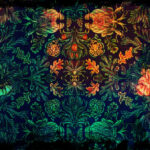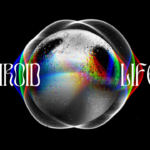Here for Part 2
Original in The Art of Anthropology, A. Gell, E. Hirsch ed., Routledge, London, 1999
Alfred Gell (1945-1997) was a peculiar thinker, one who contributed toward the development of the recursive, or ontological, turn in anthropology. Gell’s anthropology of art refuses from the outset to be an aesthetic theory, while attempting rather to embody different, non-strictly Western perspectives, such as animism, to consider the notion of the (art) object. In this landscape, particularly in Art and Agency, his main work, Gell ends up with an theory that begins to not be only anthropological but a grotesque hybrid of anthropology, philosophy, and cybernetics, one where the art object and its affects exist in a complex array of abducted energetic structures that distribute themselves across space and time. The essay, here republished, anticipates the conceptual premises of Art and Agency, focusing on the understanding of art objects between the two poles of Technology and Magic, which for Gell the latter is the grade zero of the former: a perfect idea from which partial pulsations derive.
_________________________________________
Introduction: Methodological Philistinism
The complaint is commonly heard that art is a neglected topic in present-day social anthropology, especially in Britain. The marginalization of studies of primitive art, by contrast to the immense volume of studies of politics, ritual, exchange, and so forth, is too obvious a phenomenon to miss, especially if one draws a contrast with the situation prevailing before the advent of Malinowski and Radcliffe-Brown. But why should this be so? I believe that it is more than a matter of changing fashions in the matter of selecting topics for study; as if, by some collective whim, anthropologists had decided to devote more time to cross-cousin marriage and less to mats, pots, and carvings: On the contrary, the neglect of art in modern social anthropology is necessary and intentional, arising from the fact that social anthropology is essentially, constitutionally, anti-art. This must seem a shocking assertion: how can anthropology, by universal consent a Good Thing, be opposed to art, also universally considered an equally Good Thing, even a Better Thing? But I am afraid that this is really so, because these two Good Things are Good according to fundamentally different and conflicting criteria.
When I say that social anthropology is anti-art, I do not mean, of course, that anthropological wisdom favours knocking down the Nationa, Gallery and turning the site into a car park. What I mean is only that the attitude of the art-loving public towards the contents of the National Gallery, the Museum of Mankind, and so on (aesthetic awe bordering on the religious) is an un-redeemably ethnocentric attitude, however laudable in all other respects.
Our value-system dictates that, unless we are philistines, we should attribute value to a culturally recognized category of art objects. This attitude of aestheticism is culture-bound even though the objects in question derive from many different cultures, as when we pass effortlessly from the contemplation of a Tahitian sculpture to one by Brancusi, and back again. But this willingness to place ourselves under the spell of all manner of works of art, though it contributes very much to the richness of our cultural experience, is paradoxically the major stumbling-block in the path of the anthropology of art, the ultimate aim of which must be the dissolution of art, in the same way that the dissolution of religion, politics, economics, kinship, and all other forms under which human experience is presented to the socialized mind, must be the ultimate aim of anthropology in general.
Perhaps I can clarify to some degree the consequences of the attitude of universal aestheticism for the study of primitive1 art by drawing a series of analogies between the anthropological study of art and the anthropological study of religion. With the rite of structural functionalism, art largely disappeared from the anthropological bill of fare in this country, but the same thing did not happen to the study of ritual and religious belief. Why did things happen this way? The answer appears to me to lie in an essential difference between the attitudes towards religion characteristic of the intelligentsia of the period, and their attitudes towards art.
It seems to me incontrovertible that the anthropological theory of religion depends on what has been called by Peter Berger ‘methodological atheism’ (Berger, 1967: 107). This is the methodological principle that, whatever the analyst’s own religious convictions, or lack of them, theistic and mystical beliefs are subjected to sociological scrutiny on the assumption that they are not literally true. Only once this assumption is made do the intellectual manœuvres characteristic of anthropological analyses of religious systems become possible, that is, the demonstration of linkages between religious ideas and the structure of corporate groups, social hierarchies, and so on. Religion becomes an emergent property of the relations between the various elements in the social system, derivable, not from the condition that genuine religious truths exist, but solely from the condition that societies exist.
The consequences of the possibility that there are genuine religious truths lie outside the frame of reference of the sociology of religion. These consequences philosophical, moral, political, and so on— are the province of the much longer-established intellectual discipline of theology, whose relative decline in the modern era derives from exactly the same changes in the intellectual climate as have produced the current efflorescence of sociology generally and of the sociology of religion in particular.
It is widely agreed that ethics and aesthetics belong in the same category. I would suggest that the study of aesthetics is to the domain of art as the study of theology is to the domain of religion. That is to say, aesthetics is a branch of moral discourse which depends on the acceptance of the initial articles of faith: that in the aesthetically valued object there resides the principle of the True and the Good, and that the study of aesthetically valued objects constitutes a path toward transcendence. In so far as such modern souls possess a religion, that religion is the religion of art, the religion whose shrines consist of theatres, libraries, and art galleries, whose priests and bishops are painters and poets, whose theologians are critics, and whose dogma is the dogma of universal aestheticism.
Unless I am very much mistaken, I am writing for a readership which is composed in the main of devotees of the art cult, and, moreover, for one which shares an assumption (by no means an incorrect one) that I too belong to the faith, just as, if we were a religious congregation and I were delivering a sermon, you would assume that I was no atheist. If I were about to discuss some exotic religious belief-system, from the standpoint of methodological atheism, that would present no problem even to non-atheists, simply because nobody expects a sociologist of religion to adopt the premises of the religion he discusses; indeed, he is obliged not to do so. But the equivalent attitude to the one we take towards religious beliefs in sociological discourse is much harder to attain in the context of discussions of aesthetic values. The equivalent of methodological atheism in the religious domain would, in the domain of art, be methodological philistinism, and that is a bitter pill very few would be willing to swallow. Methodological philistinism consists of taking an attitude of resolute indifference towards the aesthetic value of works of art-the aesthetic value that they have, either indigenously, or from the standpoint of universal aestheticism. Because to admit this kind of value is equivalent to admitting, so to speak, that religion is true, and just as this admission makes the sociology of religion impossible, the introduction of aesthetics (the theology of art) into the sociology or anthropology of art immediately turns the enterprise into something else. But we are most unwilling to make a break with aestheticism-much more so than we are to make a break with theology— simply because, as I have been suggesting, we have sacralized art: art is really our religion.
We can not enter this domain, and make it fully our own, without experiencing a profound dissonance, which stems from the fact that our method, were it to be applied to art with the degree of rigour and objectivity which we are perfectly prepared to contemplate when it comes to religion and politics, obliges us to deal with the phenomena of art in a philistine spirit contrary to our most cherished sentiments. I continue to believe, none the less, that the first step which has to be taken in devising an anthropology of art is to make a complete break with aesthetics. Just as the anthropology of religion commences with the explicit or implicit denial of the claims religions make on believers, so the anthropology of art has to begin with a denial of the claims which objects of art make on the people who live under their spell, and also on ourselves, in so far as we are all self-confessed devotees of the Art Cult.
But because I favour a break with the aesthetic preoccupations of much of the existing anthropology of art, I do not think that methodological philistinism is adequately represented by the other possible approaches: for in-stance, the sociologism of Bourdieu (e.g. 1968), which never actually looks at the art object itself, as a concrete product of human ingenuity, but only at its power to mark social distinctions, or the iconographic approach. (e.g. Panofsky, 1962) which treats art as a species of writing, and which fails, equally, to take into consideration the presented object, rather than the represented symbolic meanings. I do not deny for an instant the discoveries of which these alternative approaches are capable; what I deny is only that they constitute the sought-for alternative to the aesthetic approach to the art object. We have, somehow, to retain the capacity of the aesthetic approach to illuminate the specific objective characteristics of the art object as an object, rather than as a vehicle for extraneous social and symbolic messages, without succumbing to the fascination which all well-made art objects exert on the mind attuned to their aesthetic properties.
- Art as a Technical System
In this essay, I propose that the anthropology of art can do this by considering art as a component of technology. We recognize works of art, as a category, because they are the outcome of technical process, the sorts of technical process in which artists are skilled. A major deficiency of the aesthetic approach is that art objects are not the only aesthetically valued objects around: there are beautiful horses, beautiful people, beautiful sunsets, and so on; but art objects are the only objects around which are beautifully made, or made beautiful. There seems every justification, therefore, for considering art objects initially as those objects which demonstrate a certain technically achieved level of excellence, ‘excellence’ being a function, not of their characteristics simply as objects, but of their characteristics as made objects, as products of techniques.
I consider the various arts-painting, sculpture, music, poetry, fiction, and so on—as components of a vast and often unrecognized technical system, essential to the reproduction of human societies, which I will be calling the technology of enchantment.
In speaking of ‘enchantment’ I am making use of a cover-term to express the general premiss that human societies depend on the acquiescence of duly socialized individuals in a network of intentionalities whereby, although each individual pursues (what each individual takes to be) his or her own self-interest, they all contrive in the final analysis to serve necessities which cannot be comprehended at the level of the individual human being, but only at the level of collectivities and their dynamics. As a first approximation, we can suppose that the art-system contributes to securing the acquiescence of individuals in the network of intentionalities in which they are enmeshed.
This view of art, that it is propaganda on behalf of the status quo, is the one taken by Maurice Bloch in his, ‘Symbols, Song, Dance, and Features of Articulation’ (1974). In calling art the technology of enchantment I am first of all singling out this point of view, which, however one refines it, remains an essential component of an anthropological theory of art from the standpoint of methodological philistinism. However, the theoretical insight that art provides one of the technical means whereby individuals are persuaded of the necessity and desirability of the social order which encompasses them brings us no closer to the art object as such. As a technical system, art is orientated towards the production of the social consequences which ensue from the production of these objects. The power of art objects stems from the technical processes they objectively embody: the technology of enchantment is founded on the enchantment of technology. The enchantment of technology is the power that technical processes have of casting a spell over us so that we see the real world in an enchanted form. Art, as a separate kind of technical activity, only carries further, through a kind of involution, the enchantment which is immanent in all kinds of technical activity. The aim of my essay is to elucidate this admittedly rather cryptic statement.
2. Psychological Warfare and Magical Efficacy
Let me begin, however, by saying a little more about art as the technology of enchantment, rather than art as the enchantment of technology. There is an obvious prima-facie case for regarding a great deal of the art of the world as a means of thought-control. Sometimes art objects are explicitly intended to function as weapons in psychological warfare; as in the case of the canoe prow-board from the Trobriand Islands (Fig. 2.1)-surely a prototypical example of primitive art from the prototypical anthropological stamping-ground. The intention behind the placing of these prow-boards on Kula2 canoes is to cause the overseas Kula partners of the Trobrianders, watching the arrival of the Kula flotilla from the shore, to take leave of their senses and offer more valuable shells or necklaces to the members of the expedition than they would otherwise be inclined to do. The boards are supposed to dazzle the beholder and weaken his grip on himself. And they really are very dazzling, especially if one considers them against the background of the visual surroundings to which the average Melanesian is accustomed, which are much more uniform and drab than our own. But if the demoralization of an opponent in a contest of will-power is really the intention behind the canoe-board, one is entitled to ask how the trick is supposed to work. Why should the sight of certain colours and shapes exercise a demoralizing effect on anybody?

The first place one might seek an answer to such a question is in the domain of ethology, that is, in innate, species-wide dispositions to respond to particular perceptual stimuli in predetermined ways. Moreover, were one to show such a board to an ethologist, they would, without a doubt, mutter ‘eye-spots!’ and immediately start pulling out photographs of butterflies’ wings, likewise marked with bold, symmetrical circles, and designed to have much the same effect on predatory birds as the boards are supposed to have on the Trobrianders’ Kula partners, that is, to put them off their stroke at a critical moment. I think there is every reason to believe that human beings are innately sensitive to eye-spot patterns, as they are to bold tonal contrasts and bright colours, especially red, all of them features of the canoe-board design. These sensitivities can be demonstrated experimentally in the infant, and in the behavioural repertoire of apes and other mammals.
But one does not have to accept the idea of deep-rooted phylogenetic sensitivity to eye-spot patterns and the like to find merit in the idea that the Trobriand canoe-board is a technically appropriate pattern for its intended purpose of dazzling and upsetting the spectator. The same conclusion can follow from an analysis of the Gestalt properties of the canoe-board design. If one makes the experiment of attempting to fixate the pattern for a few moments by staring at it, one begins to experience peculiar optical sensations due to the intrinsic instability of the design with its opposed volutes, both of which tend to lead the eye off in opposite directions.
In the canons of primitive art there are innumerable instances of designs which can be interpreted as exploiting the characteristic biases of human visual perception so as to ensnare us into unwitting reactions, some of which might be behaviourally significant. Should we, therefore, take the view that the significance of art, as a component of the technology of enchantment, derives from the power of certain stimulus arrays to disturb normal cognitive func-tioning? I recall that Ripley’s Believe It Or Not (at one time my favourite book) printed a design which was claimed to hypnotize sheep: should this be considered the archetypal work of art? Does art exercise its influence via a species of hypnosis? I think not. Not because these disturbances are not real psychological phenomena; they are, as I have said, easily demonstrable ex-perimentally. But there is no empirical support for the idea that canoe-boards, or similar kinds of art objects, actually achieve their effects by producing visual or cognitive disturbances. The canoe-board does not interfere seriously, if at all, with the intended victim’s perceptual processes, but achieves its purpose in a much more roundabout way.
The canoe-board is a potent psychological weapon, but not as a direct consequence of the visual effects it produces. Its efficacy is to be attributed to the fact that these disturbances, mild in themselves, are interpreted as evidence of the magical power emanating from the board. It is this magical power which may deprive the spectator of his reason. If, in fact, he behaves with unexpected generosity, it is interpreted as having done so. Without the associated magical ideas, the dazzlingness of the board is neither here nor there. It is the fact that an impressive canoe-board is a physical token of magical prowess on the part of the owner of the canoe which is important, as is the fact that he has access to the services of a carver whose artistic prowess is also the result of his access to superior carving magic.
3. The Halo-Effect of Technical ‘Difficulty’
And this leads on to the main point that I want to make. It seems to me that the efficacy of art objects as components of the technology of enchantment— a role which is particularly clearly displayed in the case of the Kula canoe—is itself the result of the enchantment of technology, the fact that technical processes, such as carving canoe-boards, are construed magically so that, by enchanting us, they make the products of these technical processes seem enchanted vessels of magical power. That is to say, the canoe-board is not dazzling as a physical object, but as a display of artistry explicable only in magical terms, something which has been produced by magical means. It is the way an art object is construed as having come into the world which is the source of the power such objects have over us – their becoming rather than their being.
Let me turn to another example of an art object which may make this point clearer. When I was about eleven, I was taken to visit Salisbury Cathedral. The building itself made no great impression on me, and I do not remember it at all. What I do remember, though, very vividly, is a display which the cathedral authorities had placed in some dingy side-chapel, which consisted of a remarkable model of Salisbury Cathedral, about two feet high and apparently complete in every detail, made entirely out of matchsticks glued together; certainly a virtuoso example of the matchstick modeller’s art, if no great masterpiece according to the criteria of the salon, and calculated to strike a profound chord in the heart of any eleven-year-old. Matchsticks and glue are very important constituents of the world of every self-respecting boy of that age, and the idea of assembling these materials into such an impressive construction provoked feelings of the deepest awe. Most willingly I deposited my penny into the collecting-box which the authorities had, with a true appreciation of the real function of works of art, placed in front of the model, in aid of the Fabric Fund.
Wholly indifferent as I then was to the problems of cathedral upkeep, I could not but pay tribute to so much painstaking dexterity in objectified form. At one level, I had perfect insight into the technical problems faced by the genius who had made the model, having myself often handled matches and glue, separately and in various combinations, while remaining utterly at a loss to imagine the degree of manipulative skill and sheer patience needed to complete the final work. From a small boy’s point of view this was the ultimate work of art, much more entrancing in fact than the cathedral itself, and so too, I suspect, for a significant proportion of the adult visitors as well.
Here the technology of enchantment and the enchantment of technology come together. The matchstick model, functioning essentially as an advertise-ment, is part of a technology of enchantment, but it achieves its effect via the enchantment cast by its technical means, the manner of its coming into being, or, rather, the idea which one forms of its coming into being, since making a matchstick model of Salisbury Cathedral may not be as difficult, or as easy, as one imagines.
Simmel, in his treatise on the Philosophy of Money (1979: 62 ff.), advances a concept of value which can help us to form a more general idea of the kind of hold which art objects have over us. Roughly, Simmel suggests that the value of an object is in proportion to the difficulty which we think we will encounter in obtaining that particular thing rather than something else. We do not want what we do not think we will ever get under any set of circumstances deemed realizable. Simmel (ibid. 66) goes on to say:
We desire objects only if they are not immediately given to us for our use and enjoyment, that is, to the extent to which they resist our desire. The content of our desire becomes an object as soon as it is opposed to us, not only in the sense of being impervious to us, but also in terms of its distance as something not yet enjoyed, the subject aspect of this condition being desire. As Kant has said: the possibility of experience is the possibility of objects of experience-because to have experiences means that our consciousness creates objects from sense-impressions. In the same way, the possibility of desire is the possibility of objects of desire. The object thus formed, which is characterised by its separation from the subject, who at the same time establishes it and secks to overcome it by his desire, is for us a value.
He goes on to argue that exchange is the primary means employed in order to overcome the resistance offered by desired objects, which makes them desirable, and that money is the pure form of the means of engaging in exchange and realizing desire.
I am not here concerned with Simmel’s ideas about exchange value and money; what I want to focus on is the idea that valued objects present themselves to us surrounded by a kind of halo-effect of resistance, and that it is this resistance to us which is the source of their value. Simmel’s theory, as it stands, implies thät it is difficulty of access to an object which makes it valuable, an argument which obviously applies, for example, to Kula valuables.
But if we suppose that the value which we attribute to works of art, the bewitching effect they have on us, is a function, at least to some extent, of their characteristics as objects, not just of the difficulties we may expect to encounter in obtaining them, then the argument cannot be accepted in unmodified form. For instance, if we take up once again the instance of the matchstick model of Salisbury Cathedral, we may observe that the spell cast over me by this object was independent of any wish on my part to gain possession of it as personal property. In that sense, I did not value or desire it, since the possibility of possessing could not arise: no more am I conscious today of any wish to remove from the walls and carry away the pictures in the National Gallery. Of course, we do desire works of art, the ones in our price bracket, as personal property, and works of art have enormous significance as items of exchange. But I think that the peculiar power of works of art does not reside in the objects as such, and it is the objects as such which are bought and sold. Their power resides in the symbolic processes they provoke in the beholder, and these have sui generis characteristics which are independent of the objects themselves and the fact that they are owned and exchanged. The value of a work of art, as Simmel suggests, is a function of the way in which it resists us, but this ‘resistance’ occurs on two planes. If I am looking at an old master painting, which, I happen to know, has a saleroom value of two million pounds, then that certainly colours my reaction to it, and makes it more impressive than would be the case if I knew that it was an inauthentic reproduction or forgery of much lesser value. But the sheer incommen-surability between my purchasing power and the purchase price of an authentic old master means that I cannot regard such works as significant exchange items: they belong to a sphere of exchange from which I am excluded. But none the less such paintings are objects of desire-the desire to possess them in a certain sense, but not actually to own them. The resistance which they offer, and which creates and sustains this desire, is to being possessed in an intellectual rather than a material sense, the difficulty I have in mentally encompassing their coming-into-being as objects in the world accessible to me by a technical process which, since it transcends my under-standing, I am forced to construe as magical.
4. The Artist as Occult Technician
Let us consider, as a step up from the matchstick model of Salisbury Cathedral, J. F. Peto’s Old Time Letter Rack (Fig. 2.2), sometimes known as Old Scraps, the notoriously popular trompe-l’cil painting, complete with artfully rendered drawing-pins and faded criss-cross ribbons, letters with still-legible, addressed envelopes to which lifelike postage stamps adhere, newspaper cuttings, books, a quill, a piece of string, and so on. This picture is usually discussed in the context of denunciations of the excesses of illusionism in nineteenth-century painting; but of course it is as beloved now as it ever was, and has actually gained prestige, not lost it, with the advent of photography, for it is now possible to see just how photographically real it is, and all the more remarkable for that. If it was, in fact, a colour photograph of a letter rack, nobody would give tuppence for it. But just because it is a painting, one which looks as real as a photograph, it is a famous work, which, if popular votes counted in assigning value to paintings, would be worth a warehouse full of Picassos and Matisses.

Manoogian Collection.
The popular esteem in which this painting is held derives, not from its aesthetic merit, if any, since nobody would give what it represents (that is, a letter rack) a second glance. The painting’s power to fascinate stems entirely from the fact that people have great difficulty in working out how coloured pigments (substances with which everybody is broadly familiar) can be applied to a surface so as to become an apparently different set of substances, namely, the ones which enter into the composition of letters, ribbons, drawing-pins, stamps, bits of string, and so on. The magic exerted over the beholder by this picture is a reflection of the magic which is exerted inside the picture, the technical miracle which achieves the transubstantiation of oily pigments into cloth, metal, paper, and feather. This technical miracle must be distinguished from a merely mysterious process: it is miraculous because it is achieved both by human agency but at the same time by an agency which transcends the normal sense of self-possession of the spectator.
Thus, the letter rack picture would not have the prestige it does have if it were a photograph, visually identical in colour and texture, could that be managed. Its prestige depends on the fact that it is a painting; and, in general, photography never achieves the popular prestige that painting has in societies which have routinely adopted photography as a technique for producing images. This is because the technical processes involved in photography are articulated to our notion of human agency in a way which is quite distinct from that in which we conceptualize the technical processes of painting, carving, and so on. The alchemy involved in photography (in which packets of film are inserted into cameras, buttons are pressed, and pictures of Aunt Edna emerge in due course) are regarded as uncanny, but as uncanny processes of a natural rather than a human order, like the metamorphosis of caterpillars into butterflies. The photographer, a lowly button-presser, has no prestige, or not until the nature of his photographs is such as to make one start to have difficulties conceptualizing the processes which made them achievable with the familiar apparatus of photography.
In societies which are not over-familiar with the camera as a technical means, the situation is, of course, quite different. As many anthropologists who have worked under such conditions will have occasion to know, the ability to take photographs is often taken to be a special, occult faculty of the photographer, which extends to having power over the souls of the photographed, via the resulting pictures. We think this a naive attitude, when it comes to photography, but the same attitude is persistent, and acceptable, when it is expressed in the context of painting or drawing. The ability to capture someone’s likeness is an occult power of the portraitist in paint or bronze, and when we wish to install an icon which will stand for a person— for example, a retiring director of the London School of Economics-—we insist on a painted portrait, because only in this form will the captured essence of the no-longer-present Professor Dahrendorf continue to exercise a benign influence over the collectivity which wishes to eternalize him and, in so doing, derive continuing benefit from his mana.
Let me summarize my point about Peto’s Old Scraps and its paradoxical prestige. The population at large both admire this picture and think that it emanates a kind of moral virtue, in the sense that it epitomizes what painters our to sesar to as (aris, moduce exact epiesenio) os rather, symbol of general moral significance, connoting, among other things, the fulfilment of the painter’s calling in the Protestant-ethic sense, and inspiring people at large to fulfil their callings equally well. It stands for true artistry as a power both in the world and beyond it, and it promotes the true artist in a symbolic role as occult technician. Joined to this popular stereotype of the true artist is the negative stereotype of the false (modern) artist of cartoon humour, who is supposed not to know how to draw, whose messy canvases are no better than the work of a child, and whose lax morality is proverbial.

Two objections can be made to the suggestion that the value and moral significance of works of art are functions of their technical excellence, or, more generally, to the importance of the fact that the spectator looks at them and thinks, ‘For the life of me, I couldn’t do that, not in a million years.’ The first objection would be that Old Scraps, whatever its prestige among hoi polloi, cuts no ice with the critics, or with art-cultists generally. The second objection which might be raised is that, as an example of illusionism in art, the letter rack represents not only a particular artistic tradition (our own) but also only a brief interlude in that tradition, and hence can have little general significance.
In particular, it cannot provide us with any insight into primitive art, since primitive art is strikingly devoid of illusionistic trickery. The point I wish to establish is that the attitude of the spectator towards a work of art is fundamentally conditioned by his notion of the technical processes which gave rise to it, and the fact that it was created by the agency of another person, the artist. The moral significance of the work of art arises from the mismatch between the spectator’s internal awareness of his own powers as an agent and the conception he forms of the powers possessed by the artist. In reconstructing the processes which brought the work of art into existence, he is obliged to posit a creative agency which transcends his own and, hovering in the background, the power of the collectivity on whose behalf the artist exercised his technical mastery.
The work of art is inherently social in a way in which the merely beautiful or mysterious object is not: it is a physical entity which mediates between two beings, and therefore creates a social relation between them, which in turn provides a channel for further social relations and influences. This is so when, for instance, the court sculptor, by means of his magical power over marble, provides a physical analogue for the less easily realized power wielded by the king, and thereby enhances the king’s authority. What Bernini can do to marble (and one does not know quite what or how) Louis XIV can do to you (by means which are equally outside your mental grasp). The man who controls such a power as is embodied in the technical mastery of Bernini’s bust of Louis XIV is powerful indeed. Sometimes the actual artist or craftsman is quite effaced in the process, and the moral authority which works of art generate accrues entirely to the individual or institution responsible for commissioning the work, as with the anonymous sculptors and stained-glass artists who contributed to the glorification of the medieval church. Sometimes the artists are actually regarded with particular disdain by the power élite, andi have to live separate and secluded lives, in order to provide ideological camouflage for the fact that theirs is the technical mastery which mediates the relation between the rulers and the ruled.
I maintain, therefore, that technical virtuosity is intrinsic to the efficacy of works of art in their social context, and tends always towards the creation of asymmetries in the relations between people by placing them in an essentially asymmetrical relation to things. But this technical virtuosity needs to be more carefully specified; it is by no means identical with the simple power to represent real objects illusionistically: this is a form of virtuosity which belongs, almost exclusively, to our art tradition (though its role in securing the prestige of old masters, such as Rembrandt, should not be underestimated).
An example of virtuosity in non-illusionistic modern Western art is afforded by Picasso’s well-known Baboon and Young (Fig. 2.3), in which an ape’s face is created by taking a direct cast from the body-shell of a child’s toy car. One would not be much impressed by the toy car itself, nor by the verisimilitude of Picasso’s ape just as a model of an ape, unless one were able to recognize the technical procedure Picasso used to make it, that is, commandeering one of his children’s toys. But the witty transubstantiation of toy car into ape’s face is not a fundamentally different operation from the transubstantiation of artists’ materials into the components of a letter rack, which is considered quite boring because that is what artists’ materials are for, generically. No matter what avant-garde school of art one considers, it is always the case that materials, and the ideas associated with those materials, are taken up and transformed into something else, even if it is only, as in the case of Duchamp’s notorious urinal, by putting them in an art exhibition and providing them with a title (Fountain) and an author (‘R. Mutt’, alias M. Duchamp, 1917). Amikam Toren, one of the most ingenious contemporary artists, takes objects like chairs and teapots, grinds them up, and uses the resulting substances to create images of chairs and teapots. This is a less radical procedure than Duchamp’s, which can be used effectively only once, but it is an equally apt means of directing our attention to the essential alchemy of art, which is to make what is not out of what is, and to make what is out of what is not.
- The term ‘non-Western’ has been suggested to me as a preferable alternative to ‘primitive’ in this context. But this substitution is hardly feasible, if only because the artistic traditions of Eastern civilisations have precisely the characteristics that the term ‘primitive’ intends to exclude, but cannot be called ‘Western’. I hope the reader will accept the use of ‘primitive’ in a neutral and non-derogatory sense in the context of this essay. It is worth noting that the Trobriand carvers who produce the primitive art discussed in this essay are not primitive at all; they are educated, know several languages and are familiar with many contemporary technologies. They continue to produce primitive art because it is a feature of an ethnically exclusive prestige economy that they have rational reasons for wanting to preserve.
- The Kula is a system of ceremonial exchanges of valuables linking together the island communities of the Massim district, to the east of the mainland of Papua New Guinea (see Malinowski, 1922; Leach and Leach, 1983). Kula participants (all male) engage in Kula expeditions by canoe to neighbouring islands, for the purpose of exchanging two types of traditional valuable, necklaces and arm-shells, which may only be exchanged for one another. The Kula system assumes the form of a ring of linked islands communities, around which necklaces circulate in a clockwise direction. Kula men compete with other men from their own community to secure profitable Kula partnerships with opposite numbers in overseas communities in either direction, the object being to maximize the volume of transactions passing through one’s own hands. Kula valuables are not hoarded; it is sufficient that it should become public knowledge that a famous valuable has, at some stage, been in one s possession. A man who has succeeded in ‘attracting’ many coveted valuables becomes famous all around the Kula ring (see Munn, 1986).







